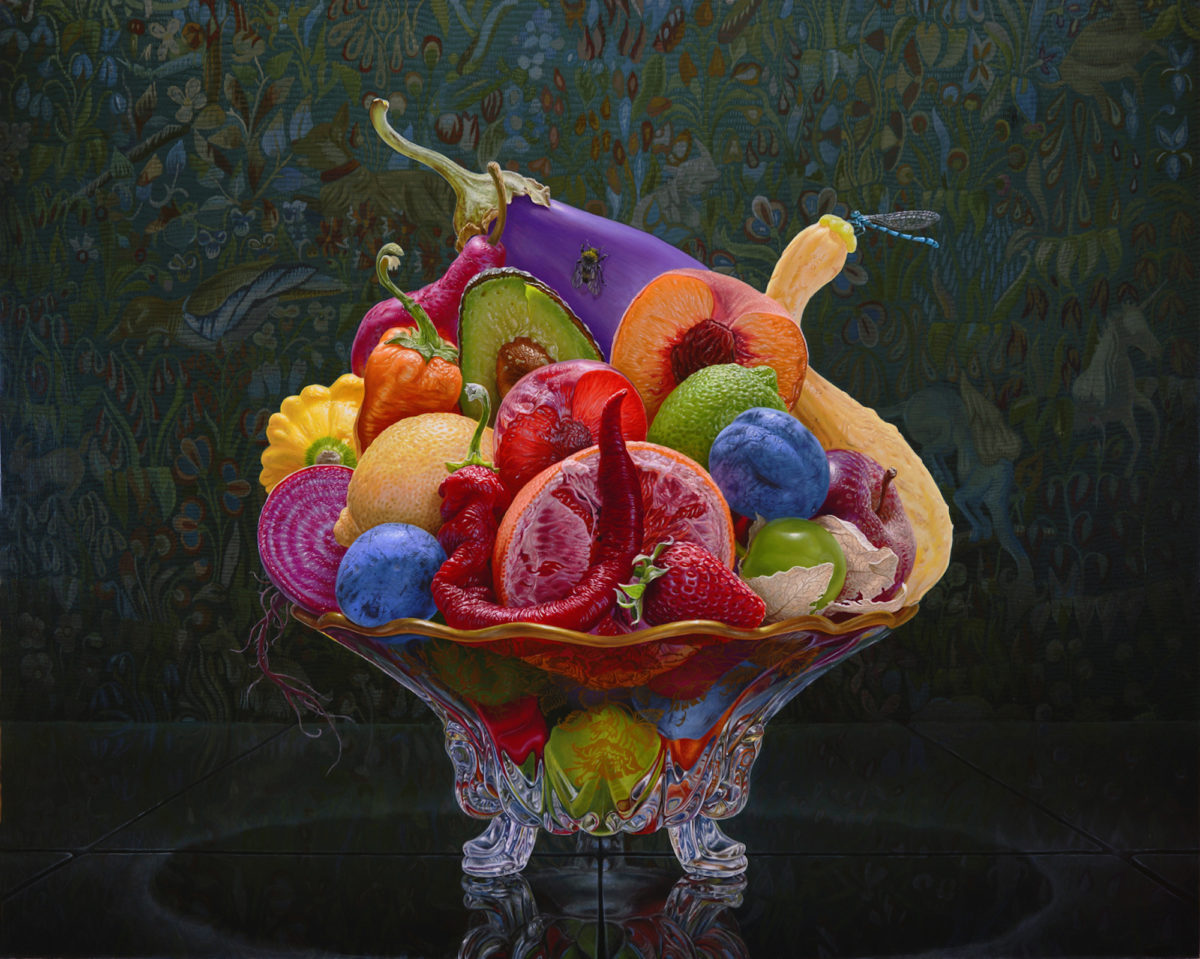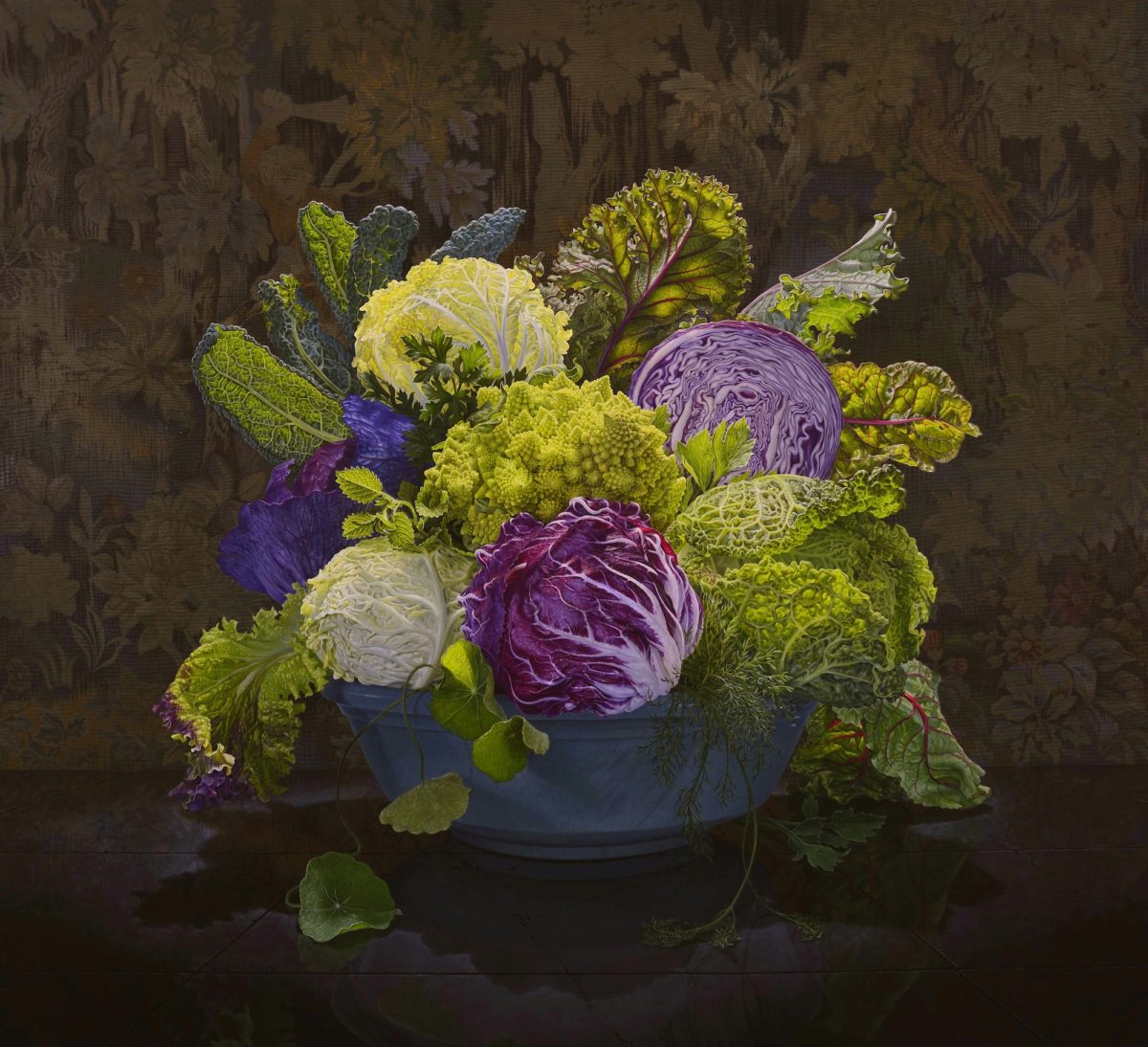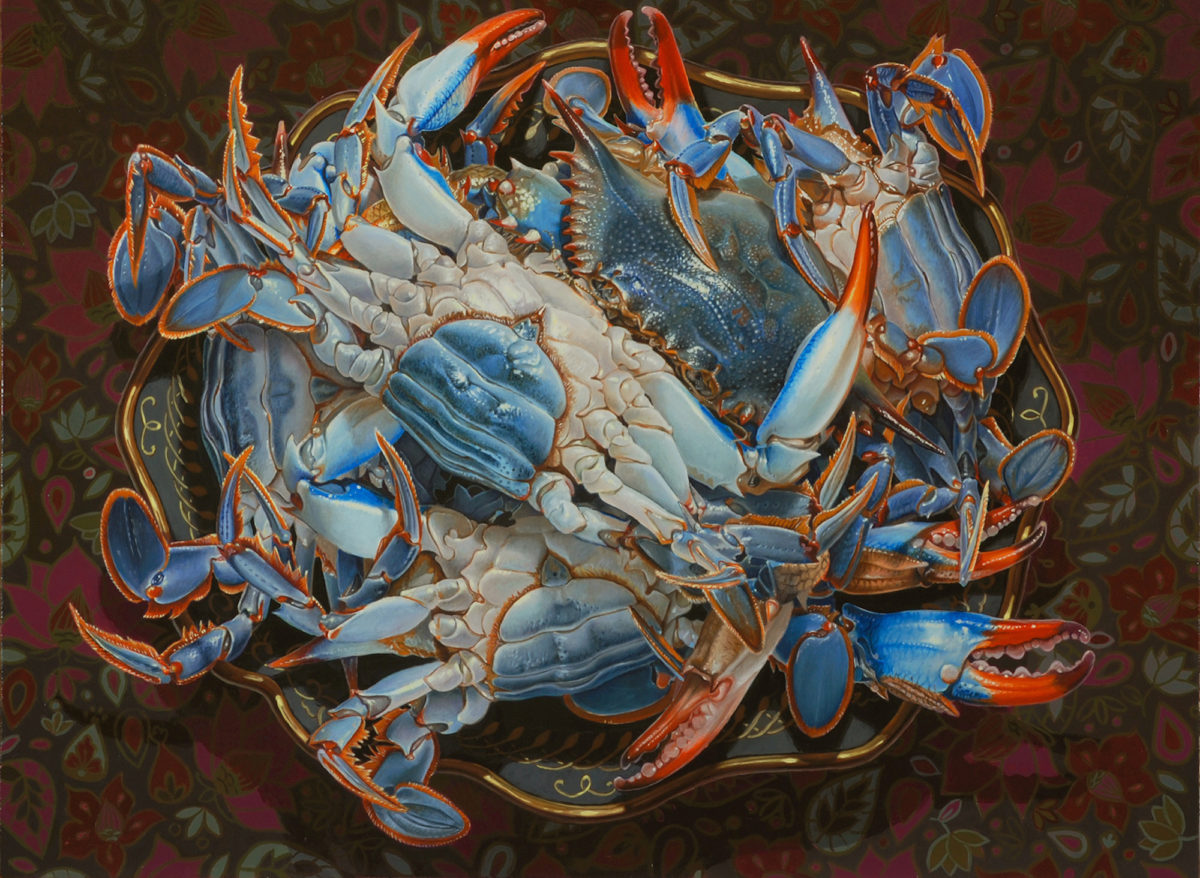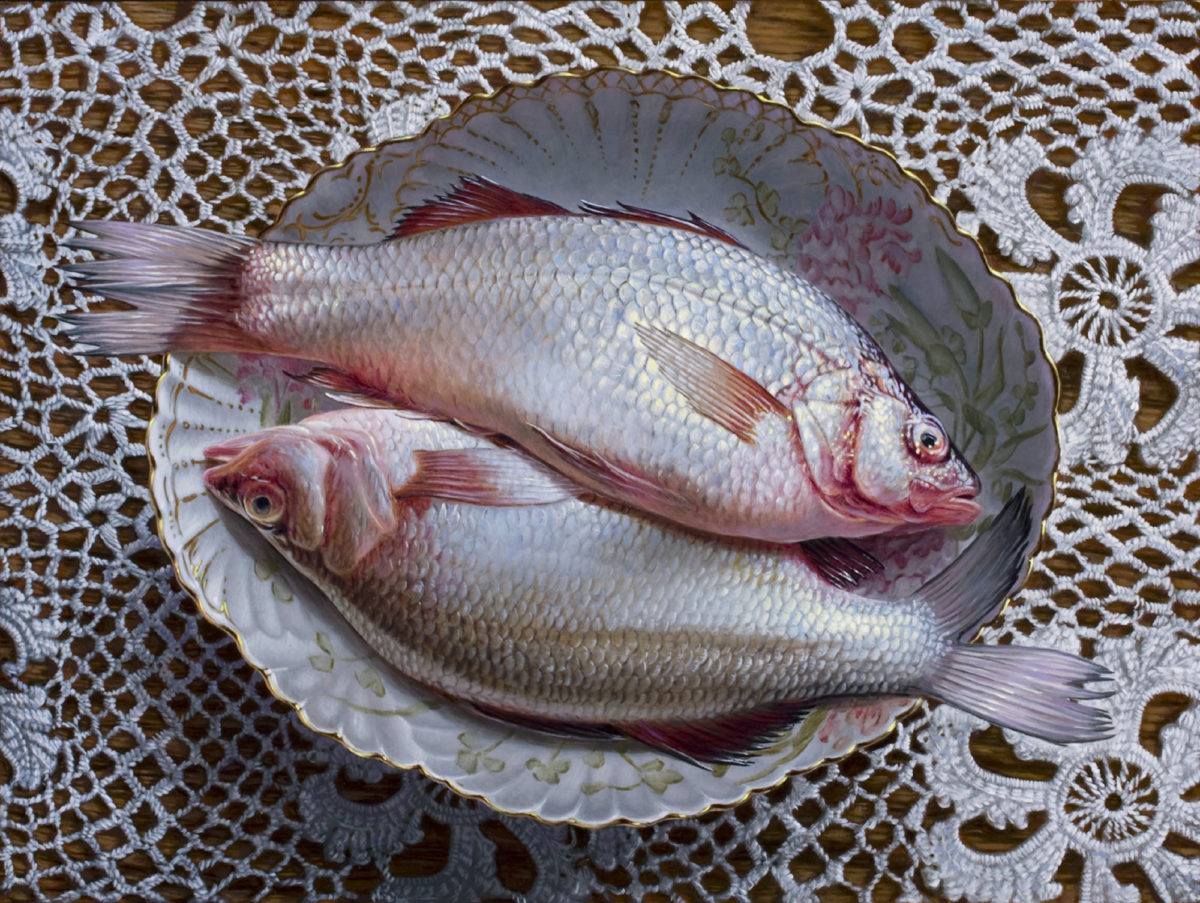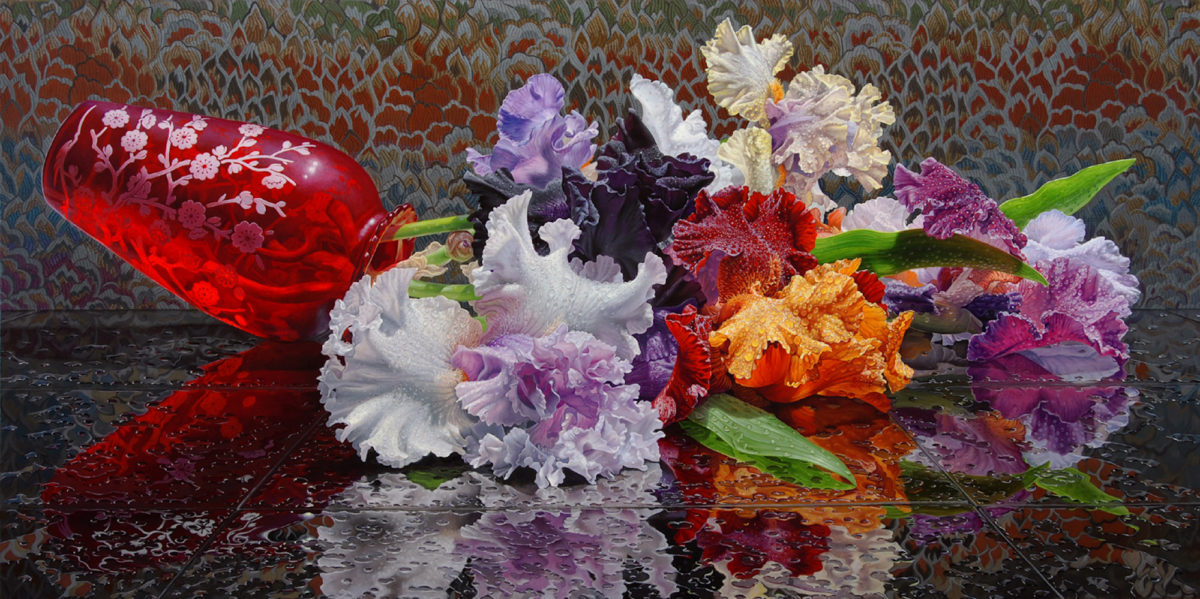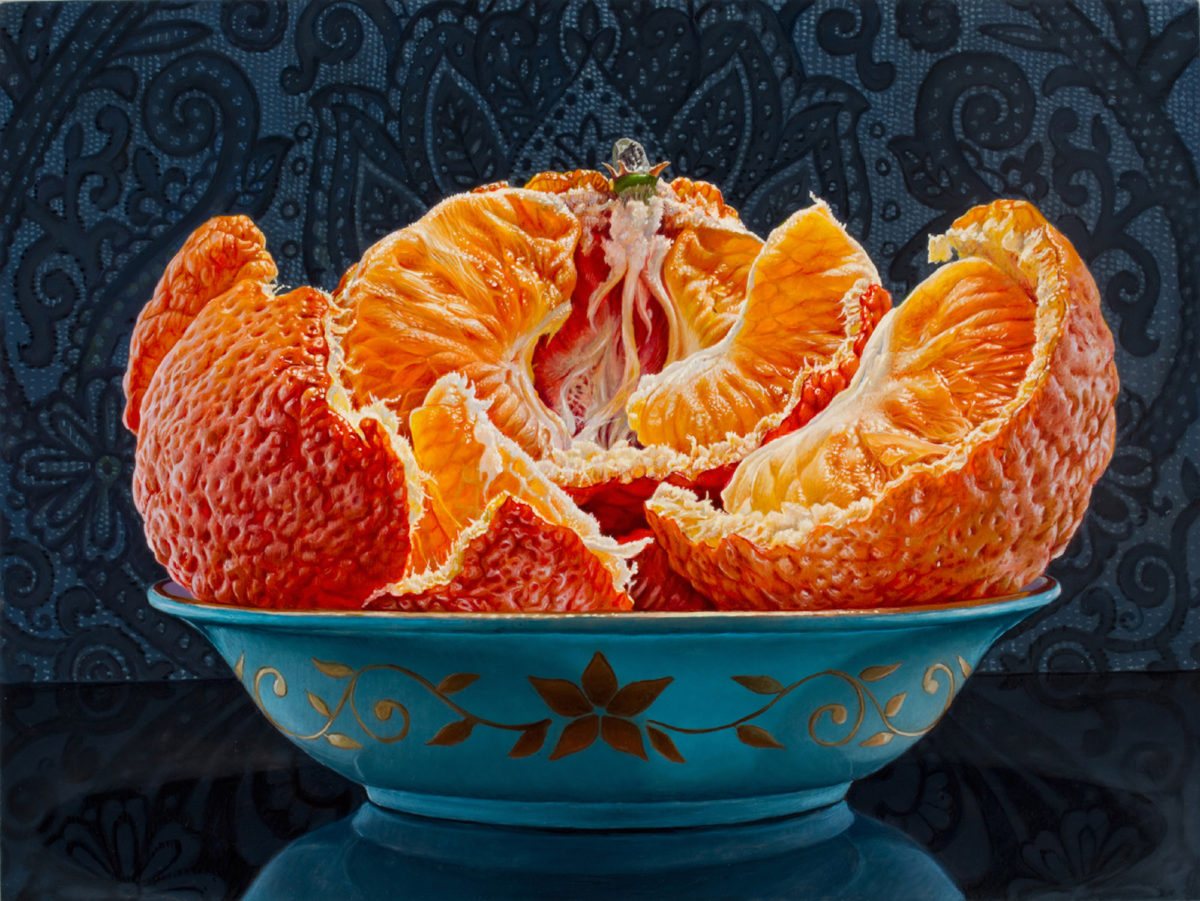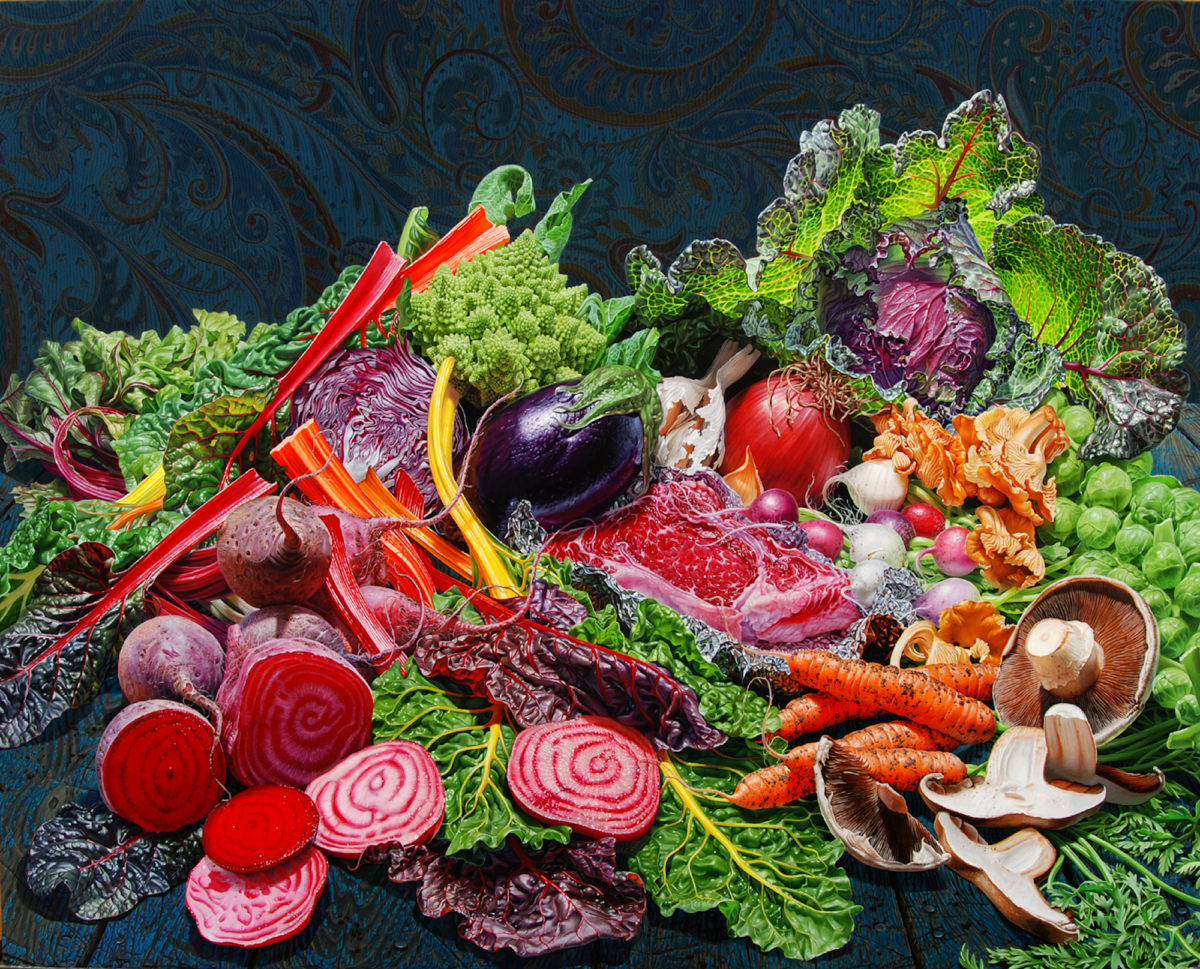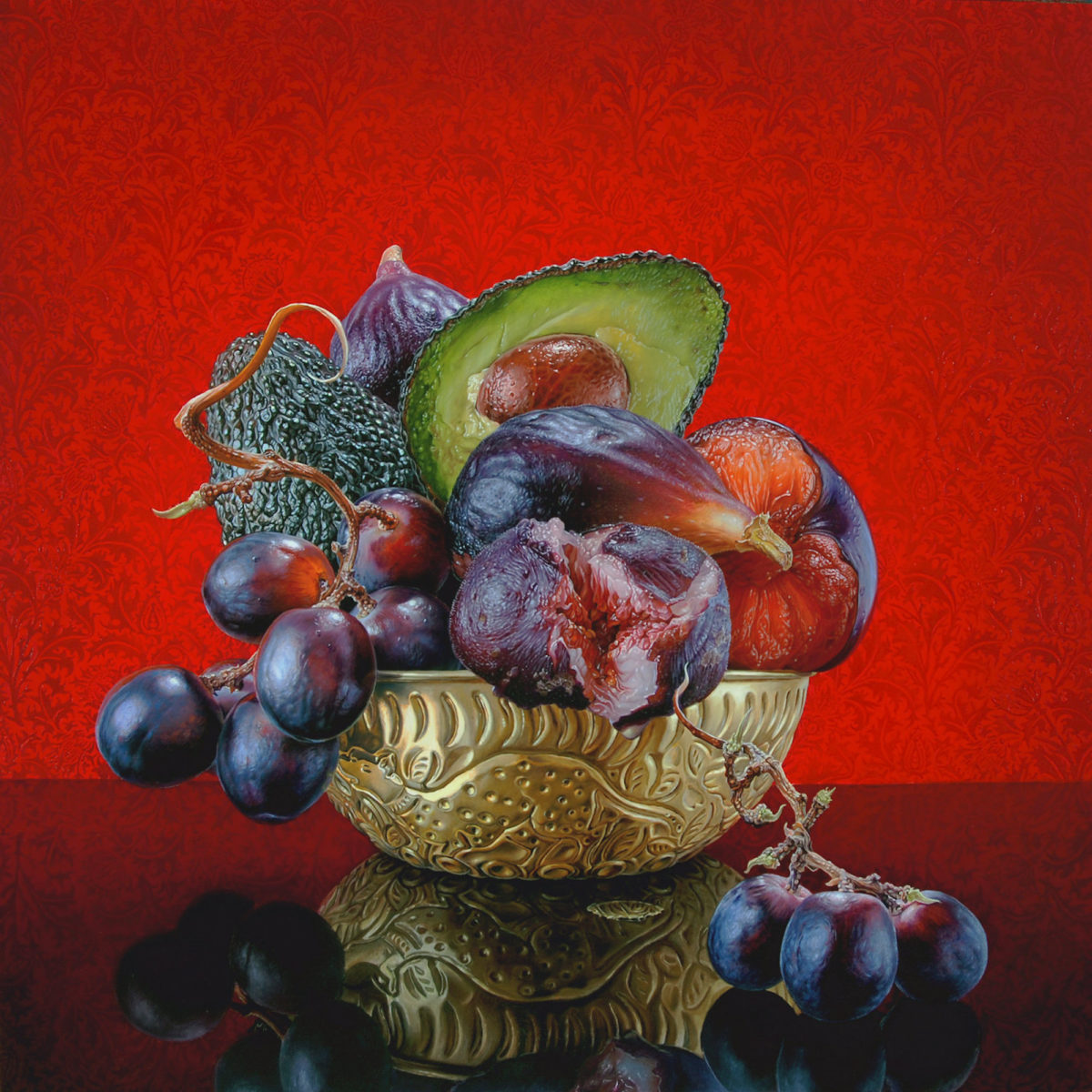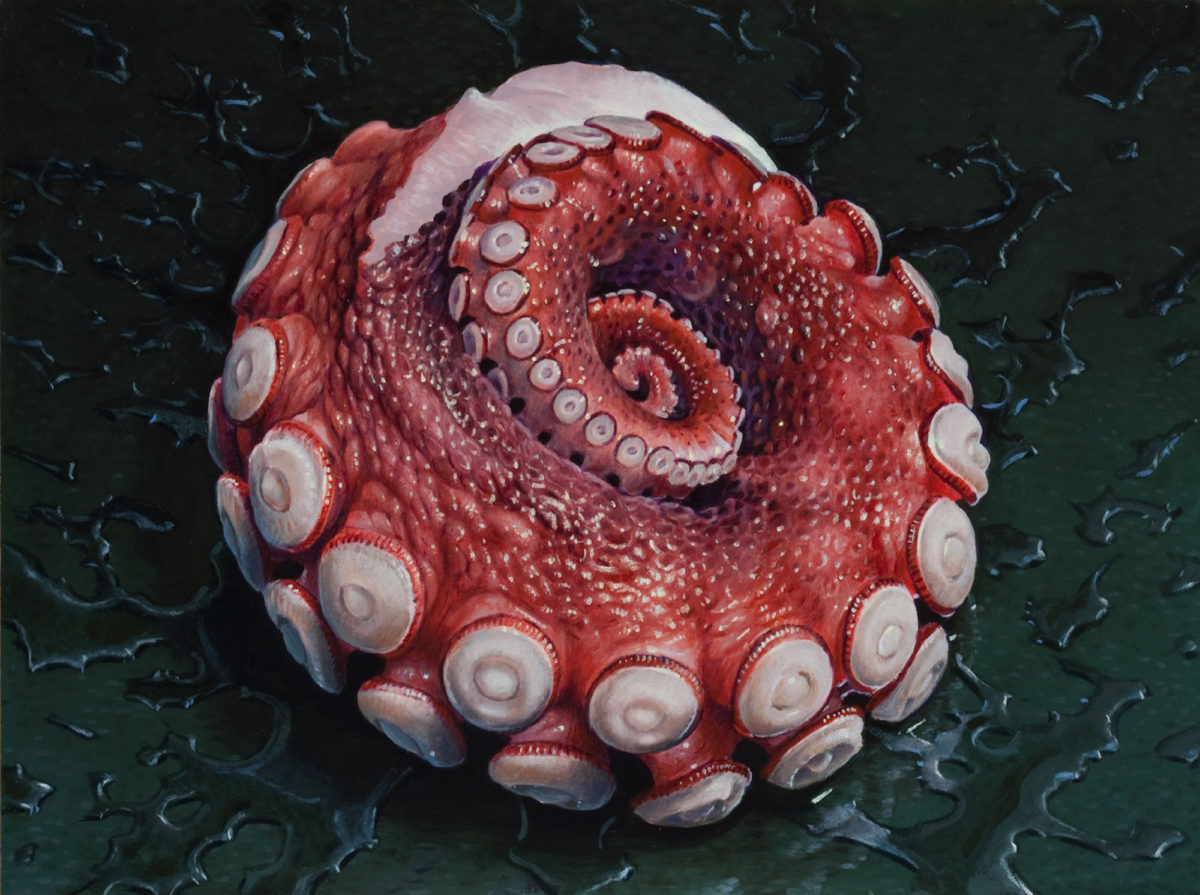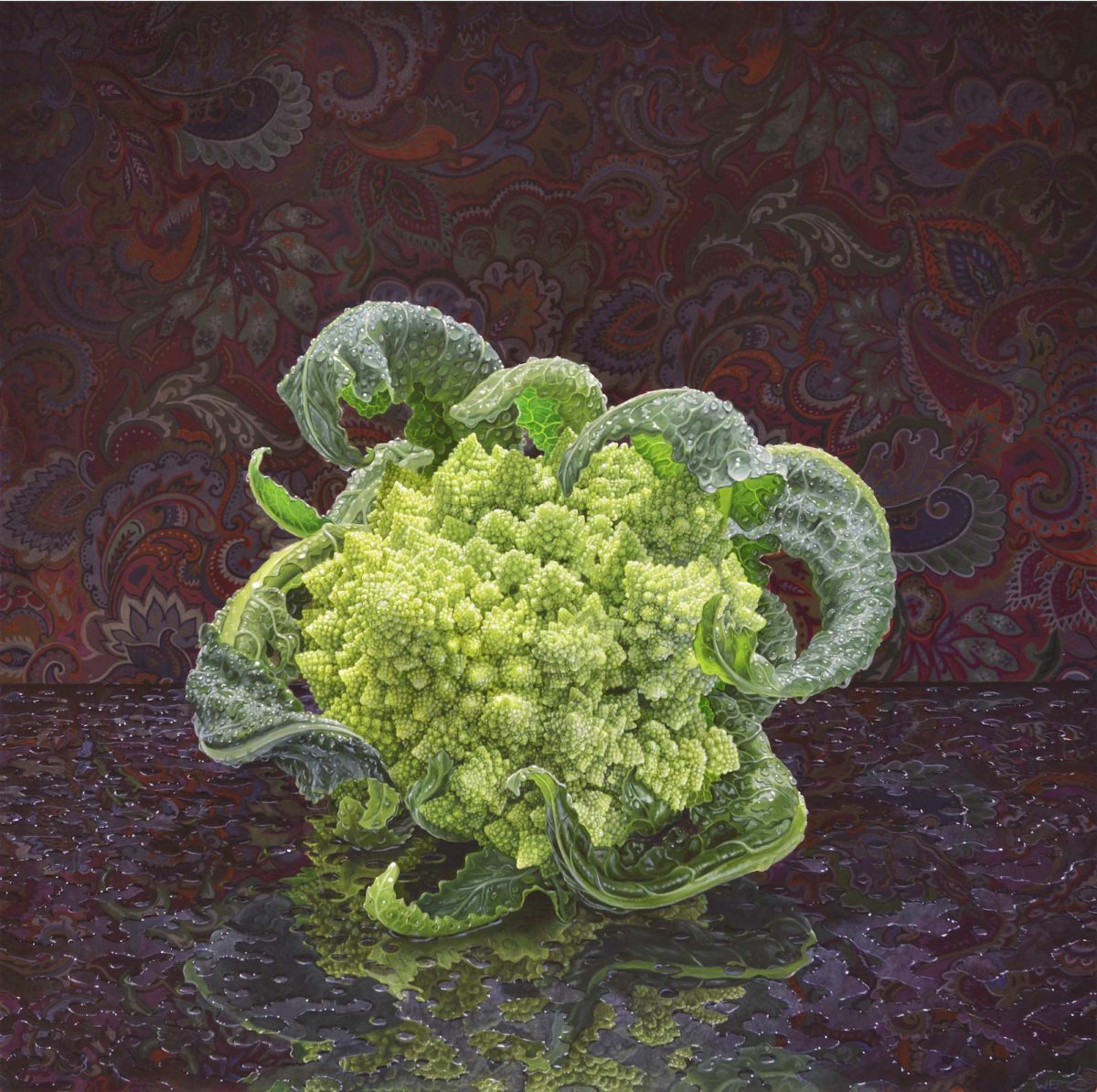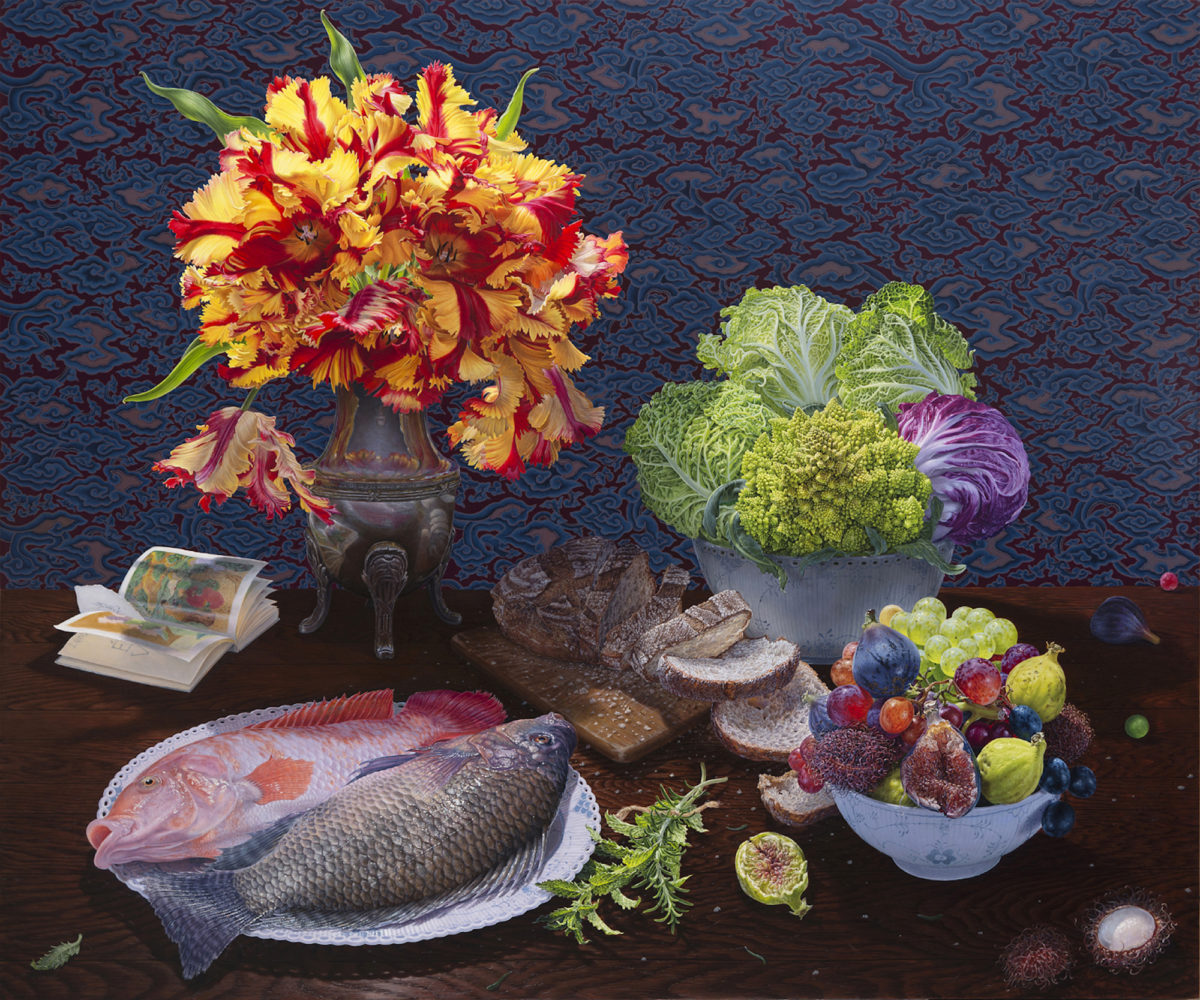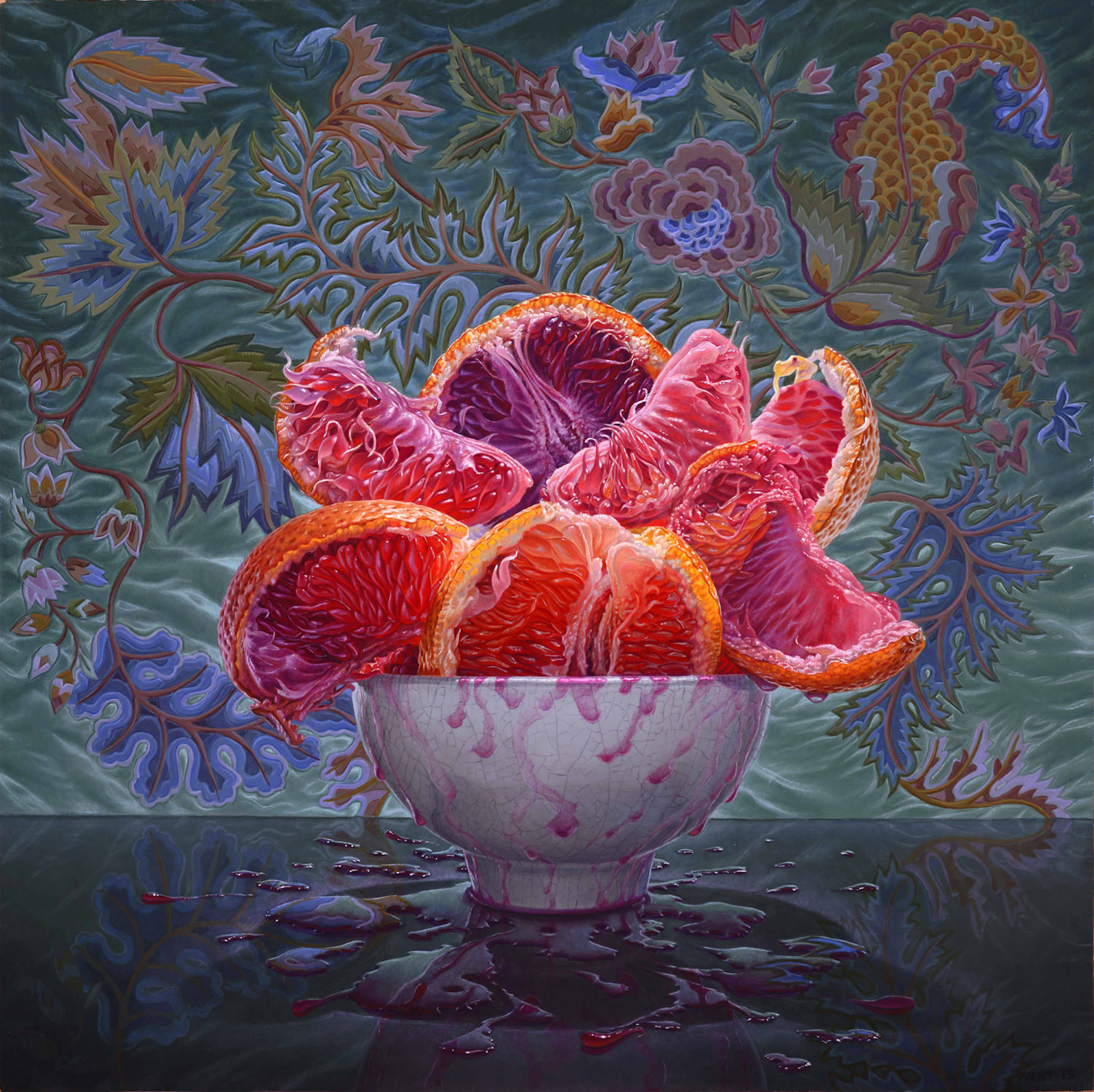
The Dutch Masters might have perfected the art of the vanitas, featuring tables laden with food and glistening flowers hinting at their decay to come, but Eric Wert would give them a good run for their money. His atmospheric still lifes of fruit, flowers and fresh fish laid out elegantly on the table reveal a fierce attention to detail; every droplet is rendered precisely, and every petal perfectly formed. Hyperrealist in style, his oil paintings adapt the tradition of the Dutch still life to the modern-day; his broccoli and avocado look as though they could have been plucked from the farmer’s market table that morning.
For all their gleaming freshness, a pervasive sense of melancholy can also be detected in Wert’s paintings. Vases are overturned, flowers are upended and fruit drips stickily over the bowl. These arrangements hint at a world gone awry, both radiant and yet destined for disposal. A wasp alights momentarily on the perfect purple flesh of an aubergine, disrupting the glossy perfection of the fruit bowl. At a time when the staging and photography of perfect plates of food—uploaded by millions each day to Instagram—has given a new visual obsession to the meals that we eat, it is refreshing to see nods to the less-than-perfect natural occurrences beyond the fantasy.
“These arrangements hint at a world gone awry, both radiant and yet destined for disposal”
Wert captures both beauty and its darker underside in his paintings; life and death are shown in their natural cycle. It is unsurprising that he worked first as a scientific illustrator at Chicago’s Field Museum of Natural History, following his studies at the School of the Art Institute of Chicago. The role involved drawing artefacts as they might have been when they were in use, pairing rigorous observation with imagination. It is this duality that characterizes Wert’s work; his mouthwatering images of food are elevated beyond their reality, as deliciously ripe as they are in disarray.
